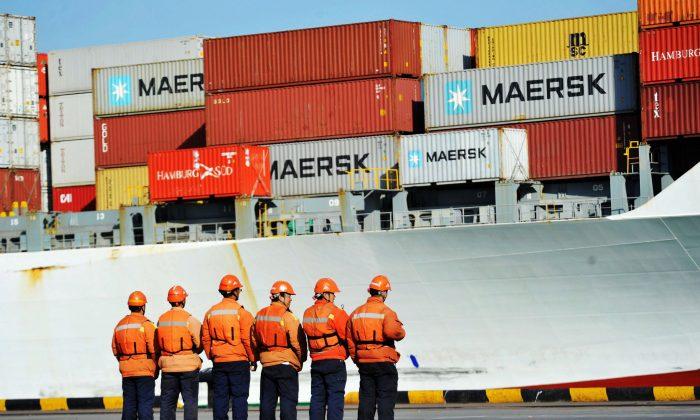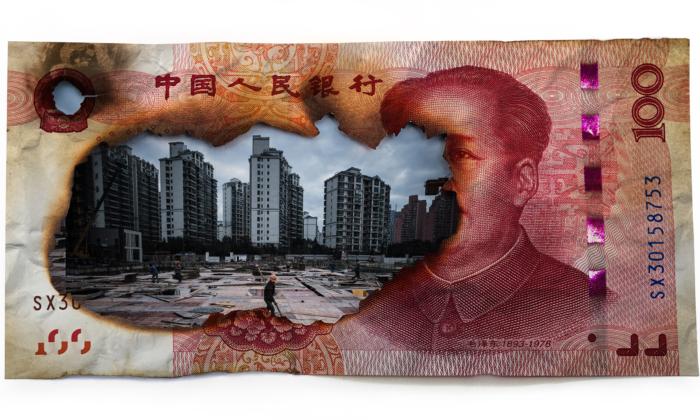President Donald Trump announced on June 15 that he would go ahead with the proposed tariffs on $50 billion worth of Chinese goods, doubling down on his promise to level the playing field and defend against improper intellectual property theft by China.
China retaliated hours later by announcing its own 25-percent tariffs on $50 billion worth of U.S. products. The implementation timeline largely mirrors the United States,’ with tariffs focusing on agricultural imports.
The Trump administration vowed that the United States would pursue additional tariffs once China retaliates in kind.
The Office of the U.S. Trade Representative (USTR) described the goods subject to the 25 percent tariffs as “Chinese imports containing industrially significant technologies, including those related to China’s ‘Made in China 2025’ industrial policy.”
The new tariffs will be implemented in two stages. The first list contains 818 products worth $34 billion which will go into effect on July 6, with another round of goods worth $16 billion to be implemented after a period of public consultation.
The sanctions by China generally target agricultural products such as soybeans and beef, which impacts Trump’s chief Republican voter base in the American heartland. Soybeans are China’s biggest import from the United States by value.
Fair weather yielded an exceptional soybean crop this year in much of the Midwest, but escalating tariffs have blunted some of that optimism.
Trade risks sent commodities markets into a tailspin last week. Soybeans futures settling in July tumbled 2.5 percent on June 15 to $904.25 on the Chicago Mercantile Exchange. It’s down 17.6 percent since the recent highs reached on March 2.
Chinese Economy on Edge
The impact of new tariffs to the Chinese economy is potentially greater, and comes at a critical time for the Chinese economy which is finally showing signs of cracking.The People’s Bank of China left rates unchanged this month, surprising markets which had expected a small rate hike to follow the Federal Reserve, suggesting the central bank was less than confident in the nation’s economic growth prospects.
Industrial output, investment and retail sales all grew less than expected, according to official May regime statistics released June 14. Retail sales, which tracks consumer confidence and spending, rose by 8.5 percent year-over-year, the slowest growth rate in 15 years. Fixed-asset investments, the growth engine for China, slowed to 6.1 percent in the January through May period, the slowest rise since China began tracking figures in 1998.
While the impact the tariffs will have on both countries’ economies is still unclear, recent data suggests a potential full-blown trade war will be more detrimental for China.
Contributing to the slowdown is China’s recent policy of curbing the shadow banking business, which has slowed credit growth recently. “Besides sluggish bond issuance amid recent rise in onshore bond defaults, other nonbank financing (such as trust and entrust loans) also dipped on a broad basis,” Morgan Stanley analysts wrote in a June 12 note to clients.
With that backdrop, slowing trade could send China’s current account—its balance of trade—into deeper deficit in the second quarter and beyond, which could trigger more capital outflows, decrease investments, and depress the renminbi against the dollar. China posted its first current account deficit in almost 17 years during the first quarter of 2018.
Intellectual Property Theft
Somewhat lost in the prevailing narrative—which misguidedly has focused on free trade vs. protectionism—is Trump’s real concerns over technology theft.The latest tariffs were framed specifically in response to theft of U.S. intellectual property (IP) by the Chinese Communist regime. According to an IP Commission report released earlier this year by the National Bureau of Asian Research, the annual cost of IP theft to the U.S. economy could be as high as $600 billion. The IP Commission estimated China as the top infringer, responsible for 50 to 80 percent of the damage.
And outside of terse denials or calling the allegations “groundless,” the Chinese regime hasn’t produced ample evidence to mitigate such concerns.
China’s “Made In China 2025” program has been cited by the USTR as a driving force behind increasing investment and acquisition of foreign technology companies, and subsequent forced IP transfers, according to a recent investigative report by the USTR.
U.S. companies have been raising concerns for years, mostly through private channels with U.S. government agencies for fear of retaliation by Beijing. This is a key reason why Trump’s broader trade dispute with China has taken on increased importance. It hasn’t been about trade; it’s a fight to protect the nation’s status as a technology leader.






Friends Read Free